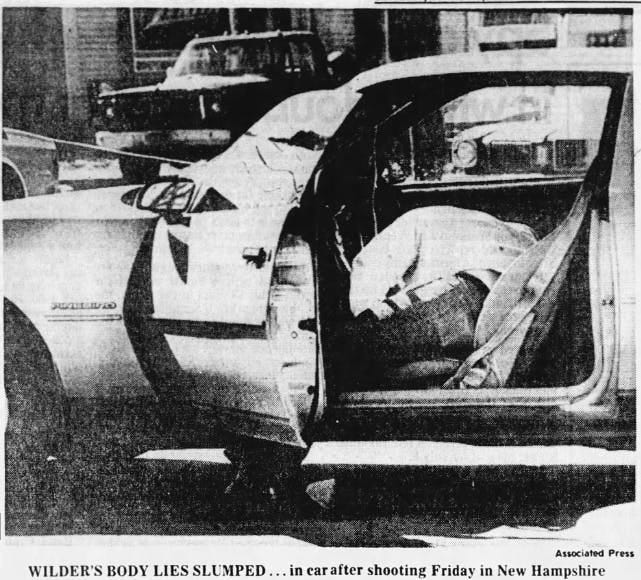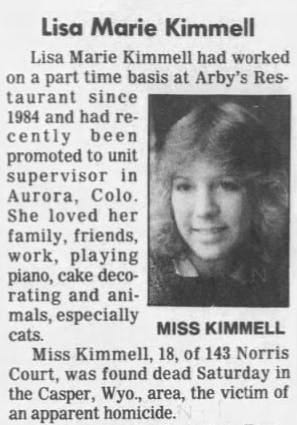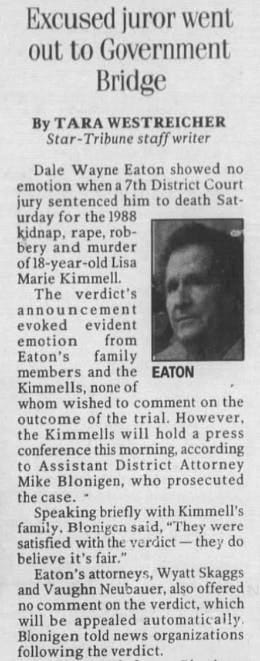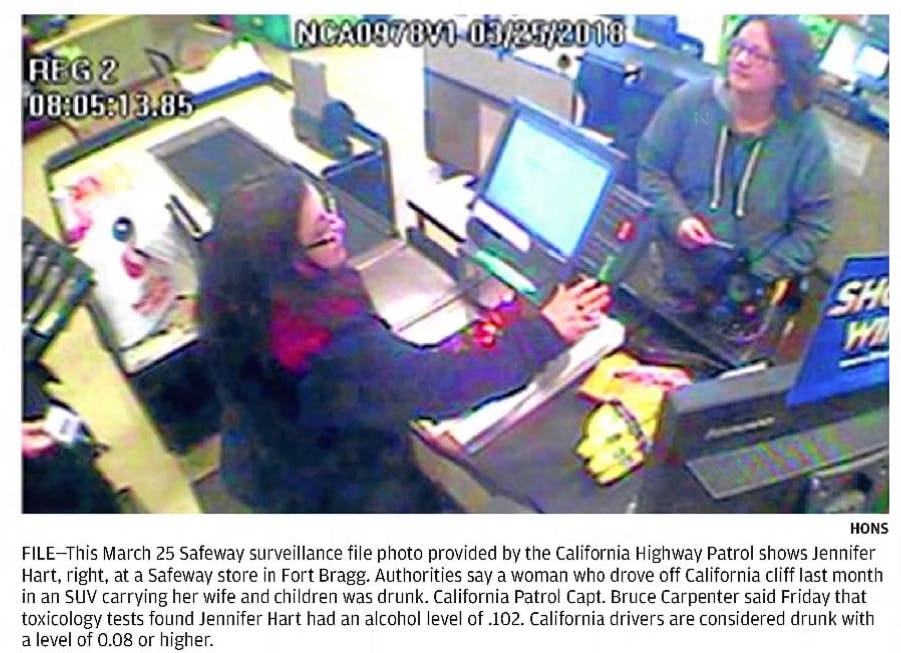Young serial killer takes first victim
Plus: Beauty Queen Killer victim, Hart family murders, and more.
1984: Body of Beauty Queen Killer’s latest victim found
The idea of the creepy male photographer is a common cliche, but sometimes it's more than accurate.
When the young, gorgeous Terry Diane Walden—a 23-year-old wife, mother, and nursing student at Texas's Lamar University—was approached by a "photographer" who asked her to model for him, she turned him down, sensing correctly that he was not to be trusted.
She turned him down twice, in fact, because he kept pressing, asking her to come to his car and look at his work samples. She even went home and told her husband about the disturbing older guy with the beard who'd been so insistent. Perhaps she was still troubled by the encounter.
Two days later, she vanished.
Her body was found on March 26, three days after she disappeared. She was floating in a canal, face down, wearing all her clothes. An autopsy would later reveal that she had been gagged, tied up, and stabbed to death.
Her murderer was Australian-born Christopher Wilder, a serial killer in the middle of a spree. Journalists described him as a "wealthy playboy" who would frequently pose as a photographer in order to kidnap, rape, and kill women, many of them aspiring models or beauty queens.
By the time his spree was done, he'd kidnapped and tortured at least 12 victims, killing eight of them, before shooting and killing himself during a tussle with police in April 1984.
Wilder died at the height of his terror. "An FBI spokesman in Buffalo said Wilder's attacks were becoming more frequent, and he was becoming more dangerous," one newspaper reported after his death.
Dive Deeper
Short read: Victims' Relatives Feel Anger, Relief (The Oklahoman)
Long read: A Killer's Rampage (Crime Library)
Listen: Christopher Wilder - The Beauty Queen Killer (True Crime All The Time)
Watch: A Model Killer (The FBI Files)
1985: A young serial killer claims his first victim
Tommie Lou Whiddon loved clothes. The 19-year-old loved using the money from her job at Valparaiso Baptist church to buy new shirts and shoes; she planned out each day's outfit the night before.
Whiddon wrote down everything she wore on her calendar to avoid wearing the same outfits too many times. She was equally obsessed with buying little clothes for her toddler nephew, Eli.

When Whiddon wasn’t dreaming of fashion, she was studying to become a physical therapist, keeping up with her social life (she’d been a popular student in high school), or relaxing on the beach with friends.
That’s where she was the day she went missing.
She’d planned to meet a friend on Okaloosa Island off Florida’s panhandle, but the friend didn’t show up, so Whiddon was lazing in the sun by herself when a 17-year-old boy came upon her.
The boy, Frank Walls, was supposed to be doing community service on the beach for his previous crimes of voyeurism and animal cruelty. Instead, he slit Whiddon’s throat, then stole her car.
Despite his young age, Frank Walls would go on to become a bona fide serial killer. Whiddon was his first victim. Over the next two years, he’d kill four more people, earning himself a spot on Florida’s death row, where he sits to this day.
His former roommate was the one who told police about him. Walls was a scary guy, said the roommate, “always talking about rape and killing people.”
Dive Deeper
Read: Remembering Tommie Lou: Thirty year anniversary of death approaching (Northwest Florida Daily News)
Listen: Frank Walls: A Personal Connection (Murder Moms)
1988: Lisa Marie Kimmell’s boyfriend reports her missing
Lisa Marie Kimmell had finished high school and was ready to be a working woman.
On the night that she disappeared, the 18-year-old girl was driving from Denver, where she managed an Arby’s, to Billings, Montana, where she’d grown up and where her two younger sisters still lived.
On her way home, she planned to pick up her boyfriend, but she never arrived. He called her parents the next day, March 26, to let them know she hadn’t shown up the night before.
Instead, Kimmell had crossed paths with a man named Dale Wayne Eaton, 24 years her senior, who later told a cellmate that she’d agreed to give him a ride (Kimmell’s family says she would never have offered something like that).
Eaton claims that they were having a wonderful time in her car until he asked if they were going to have dinner, upon which she grew nervous and began acting “high and mighty.”
This angered him—and so he abducted her.
He kept her hostage for the next six days, raping her repeatedly. Finally, he bludgeoned and stabbed her to death, then threw her off the Old Government Bridge near Casper, Wyoming.
He told his cellmate that “nobody would miss her."
Eaton wasn’t caught until 2002, when investigators developed a DNA profile from evidence found on Kimmell’s body. The DNA matched Eaton’s, who was already in prison for kidnapping an entire family at gunpoint.
Kimmell's car was later found buried deep on Eaton's property, in a large hole his neighbors recalled him once digging.
Dive Deeper
Short read: Kimmell family shares anger over change in killer’s sentence (Wyoming Tribune Eagle)
Long read: Rivers of Blood, Robert Scott
Listen: Lisa Marie Kimmell | The Lil Miss Murder (Crimelines True Crime)
Watch: Hiding A Dead Woman's Car Helps Murderer Avoid Capture (Cold Case Files)
2018: The Hart parents kill all six of their children
Jennifer and Sarah Hart, a white lesbian couple living in Woodland, Washington, loved posting about their big, diverse, happy, loving family on Facebook.
They had adopted six Black children—two sets of three biological siblings—and if anyone dared to criticize their parenting methods, they would claim racism or homophobia and go back to posting happy photos online.
But a closer look at the photos revealed their children were awfully thin. And rumors of abuse dogged them. In fact, their next-door neighbor had several disturbing interactions with the children.
In the middle of one night, 16-year-old Hannah banged on their door, saying, "Don't make me go back! They're racists and they abuse us!" And 15-year-old Devonte would plead for food whenever he saw them, begging them not to tell his parents.
Finally, the neighbor called the police and the Washington State Department of Social and Health Services.
When the latter began trying to get in touch with the Harts, Jennifer, and Sarah must have decided that the only way out of this mess—the only way to hide the awful, abusive nightmare they'd been forcing these children to live in—would be to kill everyone.
On March 26, Jennifer (drunk) and Sarah (sedated with Benadryl) doped up their children up with the remaining Benadryl and went for a drive. Jennifer was driving and was the only one wearing a seatbelt.
In the passenger seat, Sarah Googled things like "is death by drowning relatively painless?" Jennifer stopped at a 100-foot cliff in Mendocino County, California. She then accelerated, and the car plunged through the air and landed upside down in the ocean.
Everyone in the car was killed, most of them with broken necks. Devonte's body has never been found, but authorities ruled that he was in the vehicle and is indeed dead.
The prevailing theory about why the Harts did it is that their con was about to collapse—they were going to lose the children, and perhaps more importantly, they were going to lose the hefty government check that they got for their children, plus their image of being the perfect multiracial two-mom family.
So, like many family annihilators before them, they decided their best bet was to end it all.
Dive Deeper
Short read: 5 Years After Wash. Mom Drove Wife and Kids Off Cliff, the 'Hart Family Murders' Remain Chilling (People)
Long read: We Were Once a Family: A Story of Love, Death, and Child Removal in America, Roxanna Asgarian
Listen: Broken Harts (iHeart True Crime)








